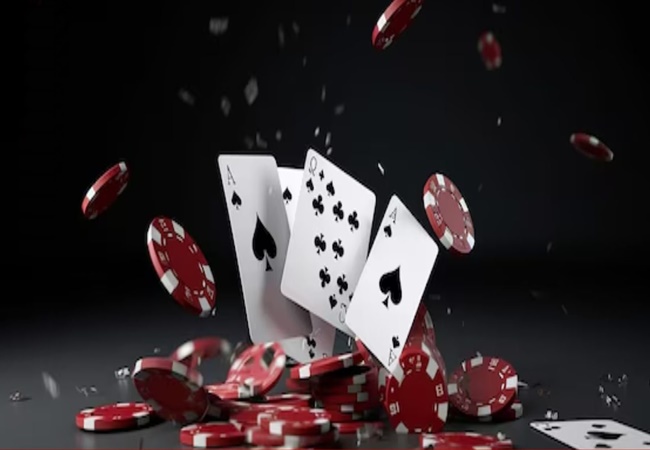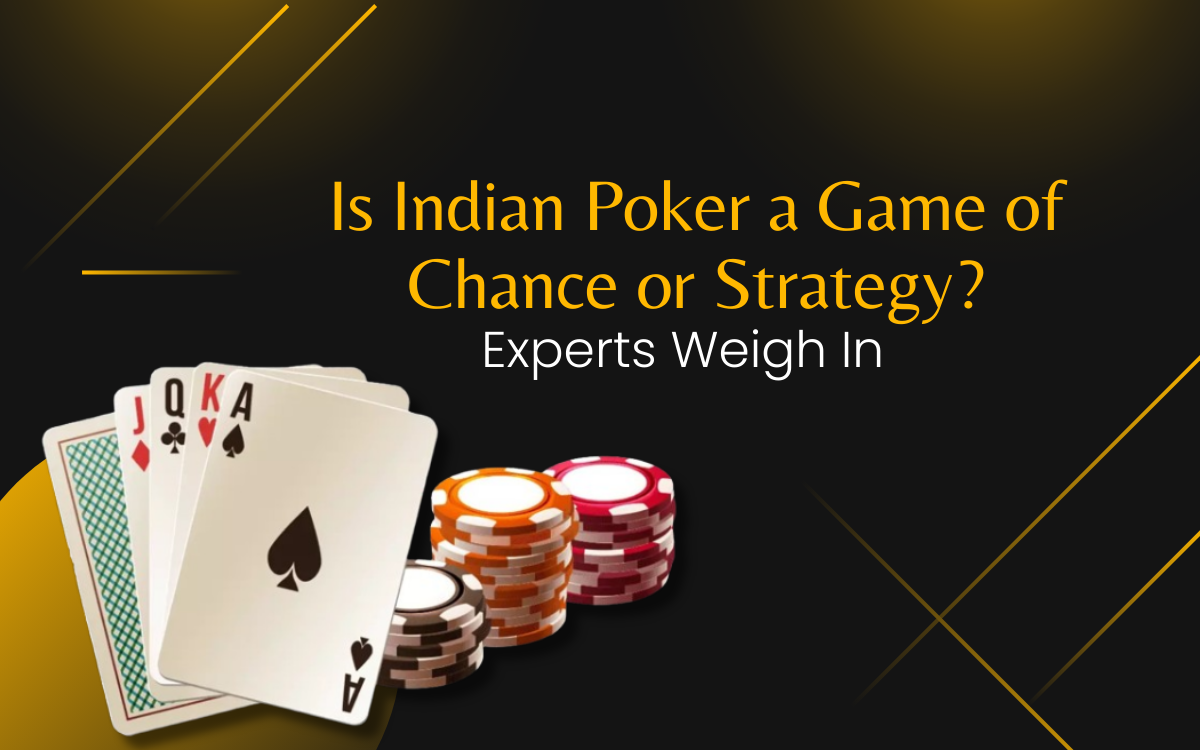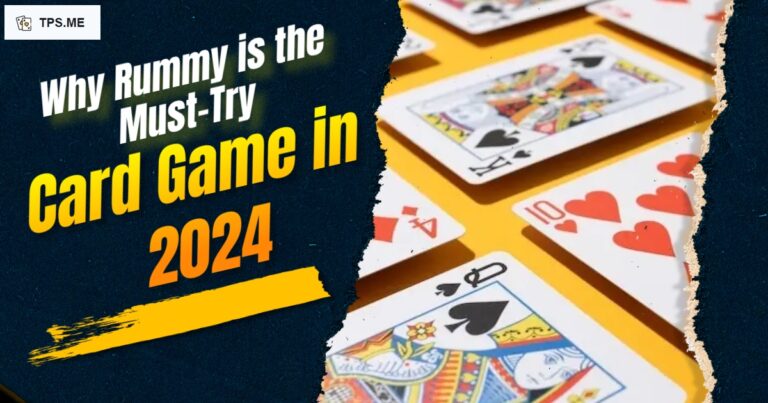Is Indian Poker a Game of Chance or Strategy? Experts Weigh In
Poker in India, also known as Blind Man’s Bluff, is a popular and entertaining card game played in various settings, from casual gatherings to serious poker circles. Unlike traditional poker games, where players can see their own cards and make informed decisions based on their hands, Indian Poker introduces a unique twist: each player holds a card on their forehead, visible to everyone except themselves, making it one of the Best Rummy games with a strategic challenge. This unique gameplay element sparks an ongoing debate among enthusiasts and experts alike—does Indian Poker rely more on chance, or is there a significant element of strategy involved?
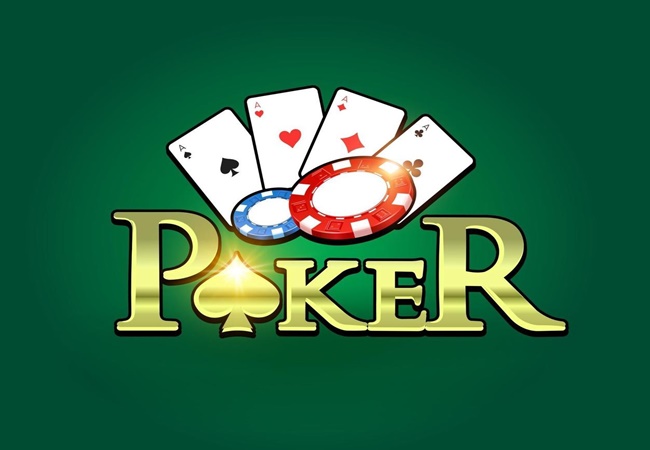
Understanding the Rules of Poker in India
To determine whether Poker in India is a game of chance or strategy, we must first understand its rules. The game typically involves the following steps:
- Card Distribution: Each player receives one card, which they place on their forehead without looking at it. All other players can see this card, but the player cannot.
- Betting Rounds: Players engage in betting rounds based on the perceived strength of their hand (as inferred from other players’ reactions and actions).
- Revealing the Cards: After the betting rounds, players reveal their cards, and the one with the highest-ranking card wins.
- Bluffing and Strategy: Players must rely on psychology, observation, and risk assessment to make betting decisions without knowing their own card’s value in Teen Patti Stars.
Given these rules, let’s delve into the role of chance and strategy in the game.
The Role of Chance in Indian Poker
Like most card games, Poker in India inherently involves an element of chance. The randomness of card distribution means that players have no control over the card they receive. Since players cannot see their own cards, they must make decisions with incomplete information, increasing the game’s unpredictability.
Factors That Depend on Chance
- Random Card Distribution: Players have no control over which card they receive, making the outcome heavily reliant on luck.
- Limited Information: Unlike traditional poker in india, where a player can evaluate their hand strength and compare it with community cards, Poker in India provides no direct knowledge of one’s own hand.
- Opponent’s Hands: The strength of a player’s hand depends not just on their card but also on the cards of their opponents, adding another layer of uncertainty.
Despite these elements of chance, experienced players argue that the game is not entirely random, as strategic decision-making significantly influences the outcomes.
The Role of Strategy in Indian Poker
While luck determines the initial distribution of cards, strategy plays a crucial role in influencing the game’s direction. The most skilled players leverage psychological tactics, observation skills, and probability assessments to maximize their chances of winning.
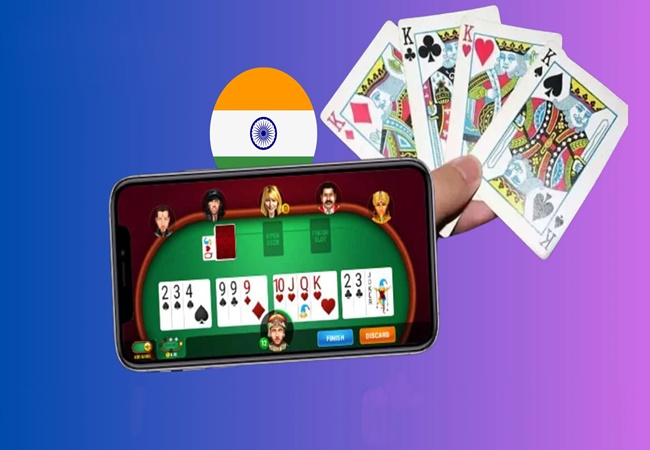
Key Strategic Elements
Bluffing and Psychological Play
Bluffing is a core component of Indian Poker. Since players can see their opponents’ cards but not their own, they must gauge how others react to their card. If a player notices hesitation, nervousness, or overconfidence in their opponents, they can make educated guesses about their own card’s strength.
For example, if an opponent quickly folds, it could indicate that the player has a high card. Conversely, if opponents aggressively raise their bets, it might mean that the player has a weak card. Understanding and manipulating these reactions can turn an average player into a formidable one.
Reading Opponents’ Reactions
Observing opponents’ betting patterns and behavior is another crucial strategic element. Skilled players develop the ability to read body language, facial expressions, and subtle tells that may reveal an opponent’s confidence level.
- Hesitant betting might suggest uncertainty, meaning a player has an average card.
- Aggressive betting could indicate confidence, possibly suggesting that the player holds a low-value card and is trying to force others to fold.
- Instant folding may signal that a player has a high-value card and does not want to risk losing more money.
By carefully analyzing these behaviors, experienced players can make informed betting decisions even without knowing their own card.
Probability and Risk Assessment
While Indian Poker game does not involve community cards or complex hand combinations, probability still plays a role. Players who understand basic probability can estimate the likelihood of holding a strong or weak card based on the revealed cards in play.
For instance, if multiple low cards are visible on opponents’ foreheads, a player may deduce that they likely hold a high card. Similarly, if high cards dominate the table, there is a greater chance that a player holds a low card.
Risk assessment also comes into play when deciding whether to call, raise, or fold. Players who master these calculations can maximize their winnings over multiple rounds.
Expert Opinions: What Do the Professionals Say?
To gain deeper insight into the debate, we consulted poker in india experts and professional players. Their perspectives provide valuable clarity on whether Poker in India leans more toward chance or strategy.
Professional Poker Players’ Viewpoints
- Daniel Negreanu (Poker Champion) – “Like all poker variants, Poker in India is a mix of luck and skill. While card distribution is random, a great player can still outplay an average player over time by using psychological strategies and reading opponents.”
- Annie Duke (Former Professional Poker Player) – “Bluffing is everything in Indian Poker. If you can control the table with your betting behavior and body language, you can win even with bad cards. That’s why strategy matters more than luck.”
- Phil Ivey (World Series of Poker Champion) – “The game may seem luck-driven at first, but over time, the best players consistently come out on top. That’s a clear sign that strategy plays a major role.”
Mathematical Perspective from Game Theorists
Game theorists suggest that Poker in India follows the principles of imperfect information games, where players must make optimal decisions based on limited knowledge. They emphasize that skilled players can use statistical inference, psychological manipulation, and probability calculations to gain an edge over opponents.
Conclusion: A Delicate Balance Between Chance and Strategy
After analyzing both aspects, it is clear that Poker in India is neither a pure game of chance nor an entirely strategic one—it is a combination of both. While luck plays a role in the card distribution, strategic thinking, psychological acumen, and probability assessment significantly influence the game’s outcome.
For casual players, Indian Poker may seem heavily dependent on luck, as the randomness of card distribution dictates short-term results. However, for seasoned players who understand how to read opponents, bluff effectively, and assess risk, strategy becomes a dominant factor in determining long-term success.
In summary, Poker in India is best described as a game of skill influenced by chance. The most successful players master the art of deception, observation, and calculated risk-taking, proving that strategy can triumph over luck in the long run. So the next time you play Indian Poker, remember—it’s not just about the card you hold, but how you play it!
